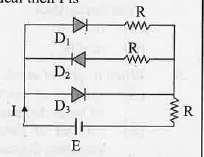Let D = diag [d1,d2,d3] where none of d1,d2,d3 is 0. prove that: D−1=diag[d−11,d−12,d−13].Solution in Punjabi
Step by step video & image solution for Let D = diag [d_1,d_2,d_3] where none of d_1,d_2,d_3 is 0. prove that: D^-1=diag [d_1^-1,d_2^-1,d_3^-1]. by Maths experts to help you in doubts & scoring excellent marks in Class 12 exams.
Updated on:21/07/2023Topper's Solved these Questions
- DETERMINANTSBOOK - MODERN PUBLICATIONCHAPTER - DETERMINANTSEXERCISE - EXERCISE
326 Videos
- CONTINUITY AND DIFFERENTIABILITYBOOK - MODERN PUBLICATIONCHAPTER - CONTINUITY AND DIFFERENTIABILITYEXERCISE - EXERCISE
588 Videos
- EXCLUSIVELY FOR JEE(ADVANCED)BOOK - MODERN PUBLICATIONCHAPTER - EXCLUSIVELY FOR JEE(ADVANCED)EXERCISE - EXERCISE
38 Videos
Similar Questions
Let A be a square matrix of order 3×3, then prove that |kA|=k|A|.
View SolutionIf f(x)={kx2x<23x≥2 is continuous at x = 2, then the value of 'k' is :
View Solutionvector ˆ i − 3 ˆ j + 4 ˆ k .Find the magnitude of the vector
View SolutionLet d_1, d_2, d_3,.......d_k. be all the divisors of a 999s positive integer n including 1 and n. Suppose d_1 + d_2+d_3+.......d_k=72 , then the value of 1/a_1+1/d_2+1/d_3+......+1/d_k is
View SolutionIf D=diag(d1,d2,d3,…,dn) where d≠0 for all I=1,2,…,n, then D−1is equal to
View SolutionFor the given conductor the drift speed of electrons at cross section I, II and III are vd1, vd2, " and vd3 , then

View SolutionIn the following circuit of PN junction diodes D_1, D_2 and D_3 are ideal then i is
View Solution(A) : Helium was discovered in chromosphere of the sum
( R ) : D3 line is observed along with D1andD21 in the solar spectrum
The correct answer is
View SolutionIf d1,d2,d3 be perpendiculars from the points A(x1,y1),B(x2,y2),C(x3,y3) respectively on the line xcosα+ysinα+sin2αcosα=0 with x1,x2,x3 are in G.P. and y1,y2,y3 are in A.P. and A,C lie on the curve y2=4x then d1,d2,d3 are in
View Solutionin the foll. Circuit of PN junction , diodes D1,D2andD3 are ideal then I is

View SolutionIf d1,d2,d3 be the three distinct diagonals of a regular octagon, such that d1<d2<d3, find the ratio of the inradius to the circumradius of the octagon.
View Solutionfour fair dice D1,D2,D3andD4 each having six faces numbered 1,2,3,4,5 and 6 are rolled simultaneously. The probability that D4 shows a number appearing on one of D1,D2,D3 is
View SolutionIf D=diag(d1,d2,d3,…,dn) where d≠0 for all I=1,2,…,n, then D−1is equal to
View SolutionIf D=diag(d1,d2,d3,…,dn) where d≠0 for all I=1,2,…,n, then D−1is equal to
View SolutionStatement 1: if D=diag[d1,d2,,dn],then D−1=diag[d−11,d−12,...,d−1n] Statement 2: if D=diag[d1,d2,,dn],then Dn=diag[dn1,dn2,...,dnn]
View Solution
